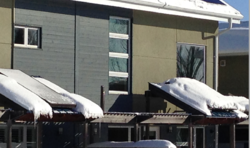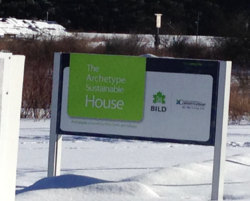Any solar system is adversely impacted by snow on the panels, whether PV, flat plate hot water, or evacuated tube hot water. If snow is a factor, major consideration should be given to a ground mount system that allows for easily brushing the snow off the panels. An extended handle floor broom works well. Avoid any solar hot water system that does not use a heat exchanger.
At Deep Portage it would have been desirable to have installed flat plate and evacuated tube systems installed side-by-side for a performance comparison. That may happen in the future, but at this point the evacuated 300 tube system is performing very well, both in summer and during a very cold winter, but no comparison is available. In fact, the system at times performs too well and heat dissipation is required to keep from over-heating the 1000 gallon hot water storage tank. Over-heating is most likely to occur on very sunny days, sometimes several days long, and low facility hot water usage. Over-heating is defined as temperature at top of storage tank > 160F.
The system as originally installed had serious installation issues, those were corrected summer 2014, and so far there has been no quality or durability issues. Minor issues remain with programming the control system to eliminate the potential for tube overheating.
Deep Portage installed this system as an educational learning tool for the benefit of the public and to help eliminate LP fossil fuel usage by the LP hot water heater. My posts on this forum and in other venues are part of the educational effort. LP usage reduction has been dramatic.
The graph shows performance on a sunny day, high facility usage. The system provided solar heated water from about 9:00am to 5:00pm. Solar provided hot water is about 75,000 btuh.




